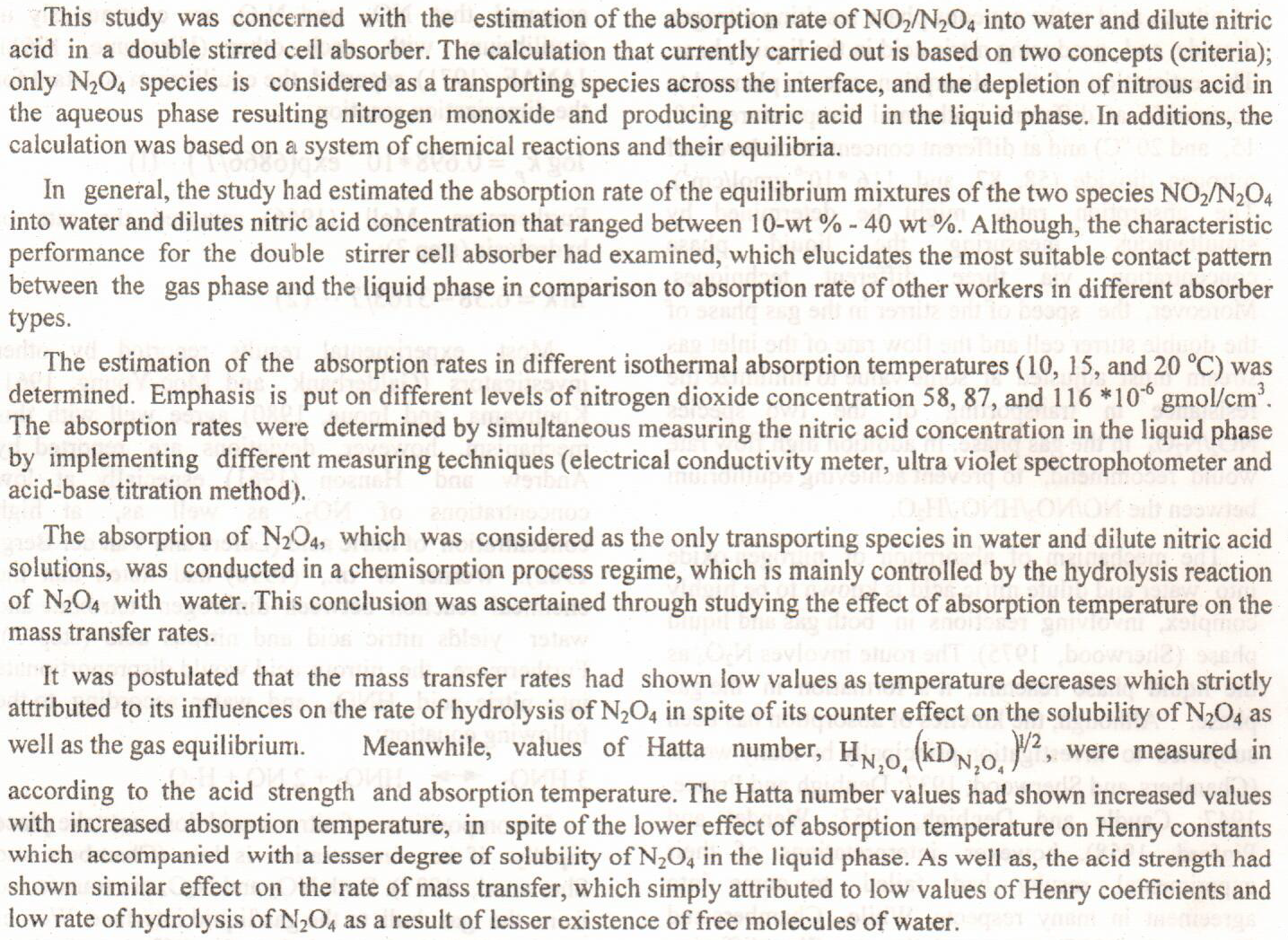
European Chemical Bulletin (ISSN 2063-5346) is a peer-reviewed journal that publishes original research papers, short communications, and review articles in all areas of chemistry. European Chemical Bulletin has eight sections, namely
This study uses an environmentally friendly and low-cost synthesis method to manufacture zinc oxide nanoparticles (ZnO NPs) by using zinc sulfate. Eucalyptus leaf extract is an effective chelating and capping agent for synthesizing ZnO NPs. The structure, morphology, thermal behavior, chemical composition, and optical properties of ZnO nanoparticles were studied utilizing FT-IR, FE-SEM, EDAX, AFM, and Zeta potential analysis. The FE-SEM pictures confirmed that the ZnO NPs with a size range of (22-37) nm were crystalline and spherical. Two methods were used to prepare ZnO NPs. The first method involved calcining the resulting ZnO NPs, while the second method did not. The prepared ZnO NPs were used as adsorbents for removing acid black 210
... Show More (6)
(6)
 (3)
(3)
A multistep synthesis was established for the preparation of a new vanillic acid-1, 2, 4-1triazole-3-thiol conjugate (
 (13)
(13)
 (7)
(7)
This study utilizes streamline simulation to model fluid flow in the complex subsurface environment of the Mishrif reservoir in Iraq's Buzurgan oil field. The reservoir faces challenges from high-pressure depletion and a substantial increase in water cut during production, prompting the need for innovative reservoir management. The primary focus is on optimizing water injection procedures to reduce water cuts and enhance overall reservoir performance. Three waterflooding tactics were examined: normal conditions without injectors or producers, normal conditions with 30 injectors and 80 producers and streamline simulation using the frontsim simulator. Three main strategies were employed to streamline water injection in targeted areas.
... Show MoreBackground: The miswak is a teeth cleaning twig made from a twig of the Salvadora persica tree (known as arak in Arabic).A traditional alternative to the modern toothbrush, it has a long, well-documented history and is reputed for its medicinal benefits. It also features prominently in Islamic hygienical jurisprudence. Materials and methods: Twenty maxillary first premolars were treated with the selected solutions which included siwak water extract (5%, 10%) and sodium fluoride 0.05% for 2minutes once daily for 20 days interval, deionized water was used as control negative. Then the concentration of the dissolved calcium ion in the etching solution of 2N HCL was measured. Results: The least amount of the dissolved calcium ion was registere
... Show MoreEvaluation of the Antibacterial Efficacy of Electrolyzed Oxidizing Water as an Irrigant against Enterococcus faecalis (An In vitro Study), Noor A Khait*, Muna Saleem Kalaf
In this paper, series of new complexes of Manganese(II), Cobalt(II), Nickel (II) Cupper(II) Zinc(II), Cadmium(II) and Mercury (II) are prepared from the new ligand [2-(3-benzoylthioureido)-3-(-4- hydroxyphenyl) propanoic acid (BHP) derived from tyrosine and benzoylisothiocyanate .Chemical structures are obtained from their 1 H, 13CNMR spectra (for BHP), elemental microanalyses, molar conductance, FTIR, UV–Vis, magnetic susceptibility in addition to TGA/DTG and DSC analysis, the suggested geometry for all complexes was tetrahedral. The biological activity of BHP and its complexes has been extensively studied against two bacterial species Staphylococcus aurous (G+) and Escherichia coli (G-) by agar-well diffusion technique, where Mn(II), Co
... Show MoreThis experiment was conducted to examine the effects of injected gibberellic acid GA3 in subcutaneous of hens neck and supplemental vitamin D3 to control basal diet on productive performance and egg shell thickness ,relative weight of egg shell of aged laying hens. Two hundred and seventy Lohmann Brown laying hens at 73 weeks of age were randomly assigned to three treatments groups. Each treatment consist of three replicates (30 hens / replicate). The treatments were : T1 control were injected subcutaneous with 0.2 ml / kg of body weight of ethanol: sesame oil solution, T2 and T3 were injected subcutaneous with 0.2 ml / kg of body weight of ethanol: sesame oil solution which contained 400 μg GA3/ kg of body weight /week during 8 weeks (tre
... Show MoreThis study investigates the application of hydraulic acid fracturing to enhance oil production in the Mishrif Formation of the Al-Fakkah oilfield due to declining flow rates and wellhead pressures resulting from asphaltene deposition and inadequate permeability. Implementing acid fracturing, an established technique for low-permeability carbonate reserves, was essential due to the inadequacy of prior solvent cleaning and acidizing efforts. The document outlines the protocols established prior to and following the treatment, emphasizing the importance of careful oversight to guarantee safety and efficacy. In the MiniFrac treatment, 150 barrels of #30 cross-linked gel were injected at 25 barrels per minute, followed by an overflush wi
... Show More